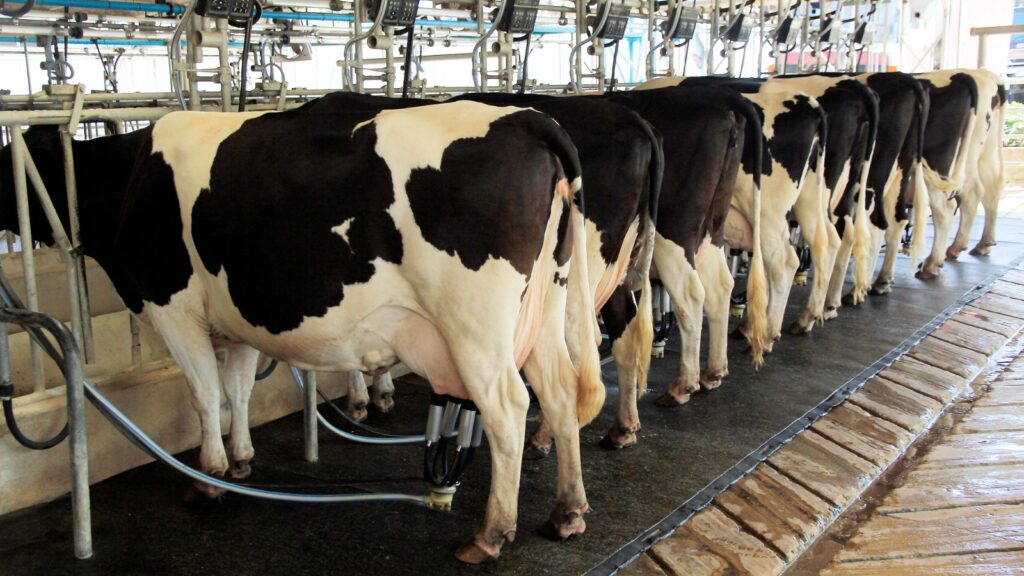
How Do Seasonal Harvests Affect Ice Cream Production Scheduling?
Planning Challenges vs. Traditional Production Methods
Dr. Anal Desai works in Operations and Marketing at Milwaukee Joe’s Ice Cream. He has a scientific background and international farm-to-table experience from living in Asia and Australia. Farm-to-table ice cream production requires extensive advance planning that standard operations never face.
“We plan at least six months out with our harvest calendar,” Desai said. He personally visits farms across Texas to coordinate seasonal ingredient sourcing and build direct relationships with farmers.
Traditional manufacturers rely on consistent wholesale ingredients year-round. Artisanal producers must sync entire production cycles with unpredictable harvest timing and quality variations that can fluctuate by 20-30% between harvests.
Building Farm Relationships and Flavor Development
Desai’s approach to farm partnerships goes beyond simple ingredient sourcing. “I personally visited the farms across Texas,” he explained. “I really met those farmers whose practices, ethics matched ours.”
His international experience shaped this philosophy. “I’ve lived a lot of my life in Asia, Australia, where it’s more common to be on farm-to-table,” Desai noted. “S0 you go and meet farmers anyway in your day-to-day life if you’re living in those areas.”
The relationship-building process involves understanding each farmer’s complete operation. “Instead of just going and googling farm to table and then choosing the farms from the Google list, you really have to go and understand their process,” Desai said.
Sometimes flavors emerge directly from these partnerships. “Our farmers come and say, ‘Hey, I have a harvest of pears. Do you want to use it?'” Desai explained. “Once they know that we can really create flavors from what is available, we just use our spice mix with our pear and we make some changes in the spices and we come up with a flavor.”

How Advanced Testing Addresses Fresh Ingredient Variables
“We create pilot sample batches early in the season to validate the quality of the fruits,” Desai explained. This testing phase allows recipe adjustments based on natural sweetness and flavor intensity changes.
The International Dairy Foods Association reports that most commercial ice cream operations use standardized ingredients to maintain consistency. However, farm-to-table producers face unique challenges when natural ingredient changes affect predetermined recipes.
Quality control begins at the farm level. “They have sensing technologies that measure sugar content,” Desai noted. Modern farming technology helps predict optimal harvest timing, but farmers also rely on traditional methods. “Obviously the farmers have their own taste buds. So they take samples and they know.”
Temperature control during churning becomes even more critical with fresh ingredients. “Water molecules tend to attract other water molecules,”
Regulatory Compliance and Consumer Education Challenges
The U.S. Food and Drug Administration creates specific constraints that complicate seasonal production. “FDA regulates whether you can call something a custard or not. You need to have 1.4% egg yolk solids in a custard,” Desai noted.
This precision means recipe adjustments become extremely limited once packaging is printed. “As you add more pumpkin, you dilute down your fat further and your eggs further,” Desai explained. “As soon as you drop below that you cannot call it a custard anymore.”

The Code of Federal Regulations Title 21 outlines specific standards for frozen dessert classifications. These requirements force producers to finalize packaging and nutritional labels months before production begins.
Consumer reactions to authentic ingredients often surprise producers. When Milwaukee Joe’s switched to fresh mangoes, customer education became crucial.
“We’ve experienced both reactions,” Desai observed. “People came and said that they taste stale or they don’t taste intense enough because fresh mangoes don’t have any added color, so the shades were not as bright. We really eat with our eyes first so I wasn’t surprised by their reaction.”
However, the transition also revealed customers who appreciated authenticity. “Certain customers came in and said, ‘This is exactly what brought me back to my childhood days. The mangoes taste so much like they came from the farm when I used to harvest them,'” Desai recalled.
The Institute of Food Technologists research indicates consumer expectations often favor artificial consistency over authentic ingredient characteristics.
Current Industry Considerations
Farm-to-table ice cream production represents a growing segment balancing artisanal quality with regulatory compliance. However, significant operational challenges remain regarding cost management, consumer education, and supply chain predictability.
Desai’s approach prioritizes relationship transparency over cost savings. “I usually tell them that don’t shy away from telling me that it’s going to be more expensive,” he tells farming partners. “I’m not here to look for the most cost effective pumpkin.”
Industry debates continue regarding optimal approaches to authentic ingredient integration. Some producers advocate for updated FDA guidelines that account for natural seasonal changes. Others prefer maintaining strict consistency standards.
For more information about FDA frozen dessert regulations, visit the U.S. Food and Drug Administration.


